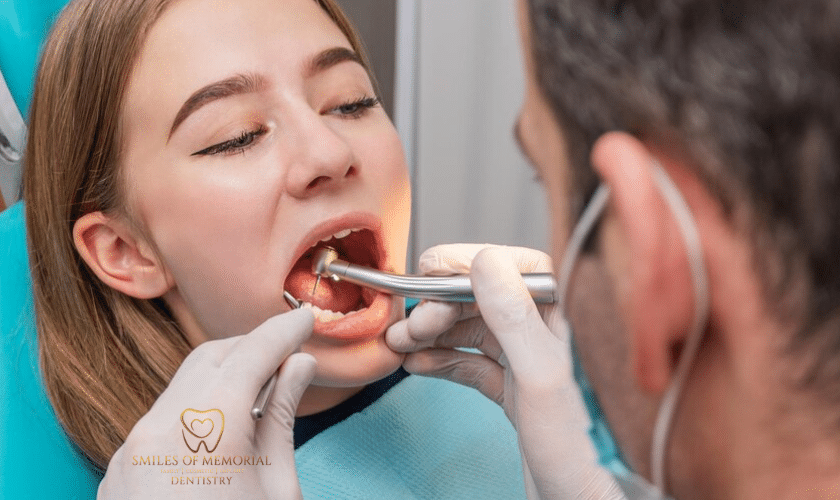Are you one of the many people who have recently had a dental filling? If so, it’s important to know how to properly care for your new restoration. Dental fillings are an excellent solution for repairing cavities and restoring damaged teeth, but they do require some aftercare. In this blog post, we will discuss what to expect after getting a dental filling, when to call the dentist if there is any problem with your filling, how to clean and care for your new restoration at home, tips on storing it safely and what you should do in case your dental filling falls out. Keep reading our blog to learn dental filling aftercare tips!
Contents
What To Expect After Getting A Dental Filling
After getting a dental filling treatment, it’s normal to feel some numbness in your mouth for a few hours due to the local anesthesia used during the procedure. You may also experience slight pain or sensitivity when you bite down on food or drink hot or cold beverages.
It’s important to avoid chewing on hard foods and sticky substances such as candy for at least 24 hours after the procedure. This will help prevent damaging the filling before it has fully hardened.
You may notice that your teeth feel slightly different than they did before having the filling done. It can take a few days to get used to this new sensation, but don’t worry – it should eventually start feeling natural again.
If you experience any severe pain, swelling, or bleeding after getting a filling, be sure to contact your dentist right away as this could be a sign of an infection or other issue that requires further treatment.
Aftercare following dental fillings involves being gentle with your mouth and paying attention to any changes in how your teeth feel. By taking care of your fillings properly, you can ensure they last for many years without causing discomfort or complications.
When To Call The Dentist
It’s important to know when you should call your dentist after getting a dental filling. While it’s normal to experience some discomfort or sensitivity in the first few days, certain symptoms could indicate a problem with your filling.
If you’re experiencing severe pain that doesn’t go away with over-the-counter pain relievers, this could be a sign of an infection or nerve damage. Additionally, if your bite feels off or uneven after the filling procedure, it’s important to contact your dentist so they can make any necessary adjustments.
Other signs that something might be wrong include swelling or tenderness around the affected tooth, difficulty chewing properly, and bleeding from the gums near the filled tooth. If you notice any of these symptoms, don’t hesitate to reach out to your dentist for advice on the next steps.
Remember: It’s always better to err on the side of caution and seek professional help rather than risk further complications down the line.
Cleaning And Caring For A Dental Filling
After getting a dental filling, it’s important to take proper care of your teeth to ensure the longevity of the filling. One way to do this is through regular cleaning and maintenance.
Firstly, make sure you are brushing your teeth at least twice a day with fluoride toothpaste. This will help remove any food particles or bacteria that may cause decay around the area of the filling. It’s also recommended to floss daily and use an antiseptic mouthwash to kill any remaining bacteria.
Another tip for caring for your dental filling is avoiding foods or drinks that are high in sugar or acidity as they can wear down the filling over time. In addition, try not to chew on hard foods like ice or popcorn kernels that could crack or damage the filling.
If you notice any sensitivity or pain around the area of the filling, contact your dentist immediately as this could be a sign of further tooth decay or damage.
Maintaining good oral hygiene habits and being mindful of what you eat can go a long way in keeping your dental fillings healthy and intact for years to come.
How To Store A Dental Filling
After getting a dental filling, it’s important to take care of the remaining filling material. In some cases, you may need to store the filling for future use or disposal if it falls out.
The first step in storing a dental filling is to clean it with water and allow it to dry completely. Once dry, place the filling in an airtight container such as a plastic bag or small jar. Make sure that there is no moisture inside the container as this can cause damage to the filling material.
You must label the container with information about which tooth the filling came from and when it was placed. This will help your dentist identify which tooth needs further treatment if necessary.
When storing your dental fillings at home, always keep them away from children and pets who could accidentally ingest them. It’s also important not to mix fillings from different teeth in one container as they may have different materials or sizes.
If you’re unsure about whether or not you should store your dental fillings at home, consult with your dentist for guidance on proper storage methods. By taking care of your dental fillings properly, you can ensure their longevity and effectiveness in protecting your teeth!
What To Do If A Dental Filling Falls Out
If you notice your dental filling has fallen out, don’t panic! It’s important to address the situation promptly to avoid any further damage or discomfort. Here are some steps you can take if a dental filling falls out:
1. Retrieve the filling: If possible, try and locate the missing piece of your filling. This will help your dentist determine what type of restoration is needed to fix it.
2. Rinse with warm salt water: Gently rinse your mouth with a solution of warm water and salt to help clean the area around where the filling was lost.
3. Apply temporary dental cement: You can purchase over-the-counter temporary dental cement at most drugstores that can be used as a short-term solution until you’re able to see your dentist.
4. Avoid eating on that side: Try not to chew on that side of your mouth until you’ve had the chance for a professional evaluation from your dentist.
5. Call your dentist immediately: Reach out to schedule an appointment as soon as possible so they can assess the situation and recommend the next steps for repairing or replacing the lost filling.
Remember, even if there isn’t any immediate pain or discomfort associated with losing a dental filling, it’s essential not to delay making an appointment with your dentist – small issues left unaddressed can quickly lead to bigger problems later down the line!
Finishing Off
To wrap things up, taking care of your dental fillings is crucial for maintaining optimum oral health. Following the aftercare tips mentioned in this article can help you avoid complications and ensure the longevity of your dental fillings.
Remember to be mindful of any discomfort or pain that persists beyond a few days after getting a filling, as it may indicate an underlying issue that requires professional attention from a dentist.
By following these simple steps, you can keep your teeth healthy and happy for years to come.





